
Making Sense of Fly Ranch — #2: Sound
November 14, 2017Making Sense of Fly Ranch — #3: Smell
May 1, 2018Visiting Fly Ranch: Idea Roundup
“I probably shouldn’t have worn sandals,” I thought as we piled out of two unmarked white vans. We were about 30 minutes from the site where Black Rock City was still being born by thousands of building Burners. I never imagined leaving BRC would be something I’d actually want to do, even during the early […]
“I probably shouldn’t have worn sandals,” I thought as we piled out of two unmarked white vans. We were about 30 minutes from the site where Black Rock City was still being born by thousands of building Burners. I never imagined leaving BRC would be something I’d actually want to do, even during the early arrival days before the event. It wasn’t until I found myself exploring game trails, alien plant life, and mysterious geysers that I came to fully appreciate the potential in Fly Ranch, Burning Man’s newest land acquisition.
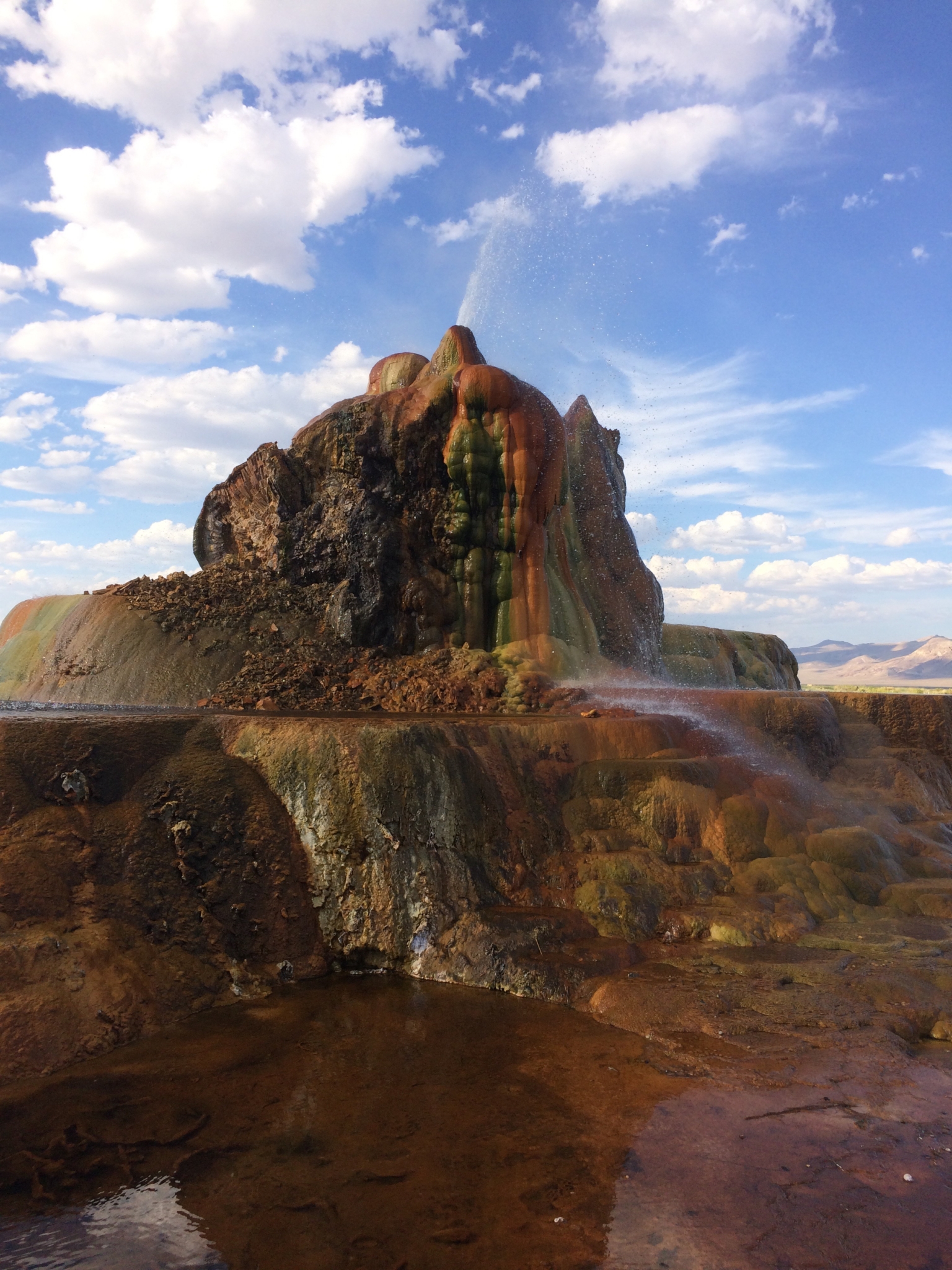
This place is almost nothing like the playa. It has water, more than 100 species of plant life, and the 3,800-acre property stretches from the portion of desert where the Burning Man event is held now, all the way to Highway 34. The space has been used by ranchers, miners, water speculators, and for aviation training, so remnants of all those activities are present, including half of an old airplane.
Zoning laws forbid any permanent structures or development on the land but agriculture. The space has two dams, two wells, 90 standing pools (five to 10 of these are great for swimming) and about 640 acres of marshy wetlands, all of which set back Burning Man Project a cool $6.5 million. It’s worth mentioning, however, that not a penny of that came from ticket sales. All the funds were donations, gifts offered with no strings attached, in accordance with Burning Man culture’s principle of Gifting.
Tromping through the terrain, the only signs of humans were a few half-buried shotgun shells, a fence that had been erected to keep cattle from roaming too far, and a little viewing deck semi-circling the most prominent of the three nearest geysers. Each fed into several pools that were teeming with microbial life at the bottom in a thick, stringy murk. The pools were warm near the edges like a hot spring. Our expedition guide, who worked on the Fly Ranch project explained, “These pools can get up to 150 degrees, but the algae continues to survive. Isolated to these pools, this microbial algae dates back about 2,000 years.” It indeed seemed alive, like a descendent of the species that made the evolutionary leap from single-celled to multi-celled organisms. Some of the other attendees even thought this sludge had healing properties, so they rubbed it all over their skin.
As we de-MOOPed our site and prepared to load up into the vans, we circumnavigated the largest geyser and went up close to take some pictures. That’s when we found one of the largest marshy spaces under the geyser had been pummeled with human footprints. You could see where decades of gorgeous multicolored algae had been carelessly and irreparably smeared. “A trespasser came in under the cover of the eclipse to get a photograph with the geyser in it,” the guide explained. “It’s reminded us of the fragility of this ecosystem and our responsibility to protect this space for the animals and life that live here.” His words were punctuated by a family of wild mustangs who looked up to agree from about 15 yards over his shoulder.

But Fly also has enough space and potential to achieve a lot of good for the local community, the scientific community, and for Burning Man. Resting under the temporary shade structure, I realized this hadn’t been a conventional tour with a set path. At one point, Fly Ranch Community & Operations Manager Zac Cirivello pointed at a game trail. Then he gestured toward some wild brush and said to the group, “Which way do you want to go?” as if to encourage a conversation about what path would be the best way to achieve our goal together. When we arrived, our guide explained, “If the world is an ocean, and we’re all floating in groups, Burning Man is like a chance for all these parts of incredible communities to sail together at sea in the same direction, to see how it would be sailed together all the time. Fly Ranch represents the shore.”
“Now that we’ve arrived, what now?”

Loading up into the vans, the group got to talking, and a few ideas surfaced for Fly Ranch. Here are just a few that merited extended discussion.
Destination for Burner Art to Preserve History
Some of the space at Fly Ranch was raised by Will Roger Peterson for the 1997 Burn, which was held at Fly. Also along the stretch of highway, there are numerous spots for landmarks that could mark the space as a haven for all but forgotten art pieces from past Burns. When art doesn’t get burned, it has to go somewhere, and a year-round facility could be the perfect hall of fame to hold space for fallen favorites, community leaders and other characters in the ongoing story of Burner culture.
Educational Workshops + Seminars to Bring New Skills Into Our Community
Learning is such an important part of the Burner experience, and whether it’s “Leaving No Trace” or “Radical Self-reliance,” each of the principles of the ethos of Burning Man implore a learning experience not found in universities or colleges. Permaculture programs, eco-friendly construction, and waste diversion concepts could all be advanced at the site with the right infrastructure. Burners Without Borders Program Manager Christopher Breedlove suggested taking this a step further and using the space as a foundry for art that could be sold as a source of revenue generation, inspired by other land-based projects such as Cosanti and Arcosanti. Breedlove also imagines the space as a gathering place for future Burners Without Borders activities, like leadership development curriculums, or a “Without Borders” Conference.
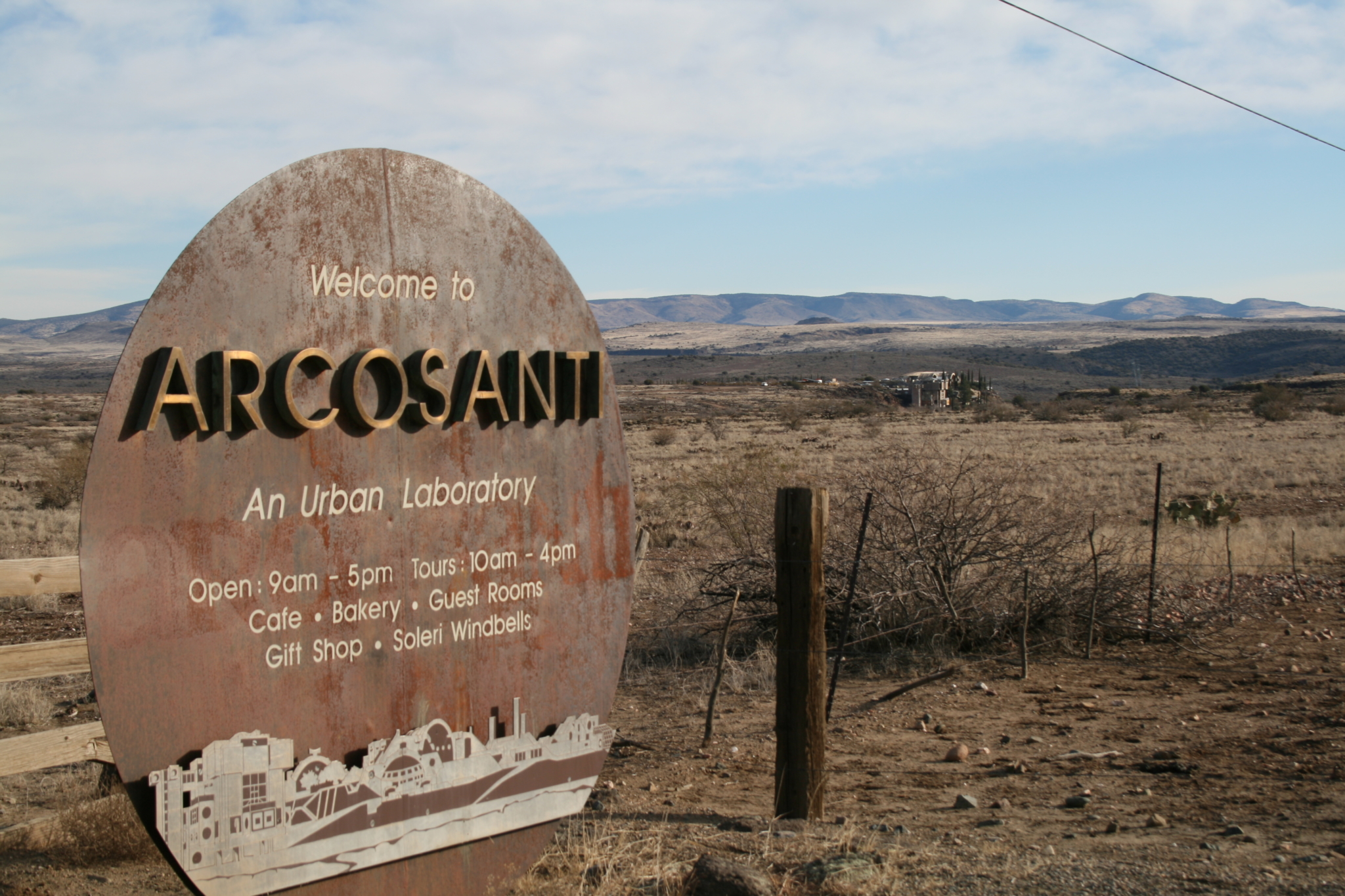
Energy Farm for a Carbon Neutral Burning Man
With hot, level planes perfect for solar panels, windstreams to turn turbines and geothermal pressure to create steam, Fly Ranch has plenty of energy potential. If harnessed, Fly Ranch could produce enough power to offset the onsite energy costs of the annual event, or in the off-season, excess power could be sold back into the grid for a carbon neutral Burning Man.
Research and Development Lab for Composting and Waste Diversion
Porta-potties are a chief source of waste at Burning Man, and if people are going to visit Fly Ranch, even for a little while, they should have some place to use the bathroom. Composting toilets enable hu-manure to be diverted from the wastestream to become a lucrative resource useful to farmers. Different types of algae can be used in composting toilets, too. Some even produce hydrogen that can be a source of power! Is it possible that Fly Ranch can unleash Burning Man’s untapped potential with the power of poo? It’s already begun. There’s now a composting toilet on site made from reclaimed materials, complete with solar shower, and it catches all the gray water.
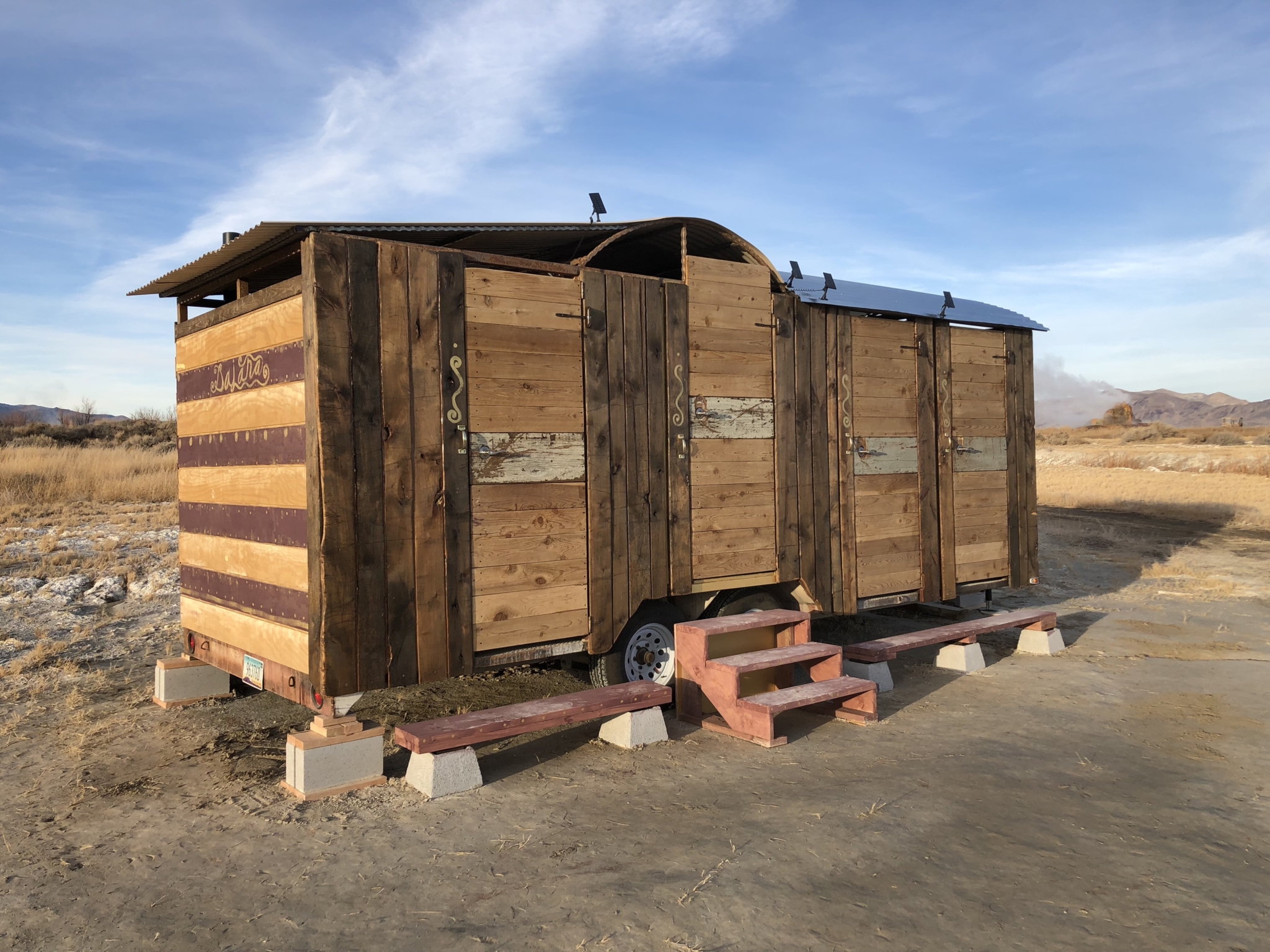
Nature Preserve with Rare Landscape Services
Perhaps the most important of the ideas circling Fly Ranch at this time concern protection and preservation of the wildlife. From tiny microbes to rare plant species, all the way to birds, critters, deer and mountain lions, the ecosystem at Fly Ranch is like a window into primordial history of incalculable worth. Of all the ideas circulating, there seemed to be the most consensus and appreciation around a nature preserve concept for Fly Ranch. The Fly Ranch stewards are exploring this already, starting by mapping invasive plant species.
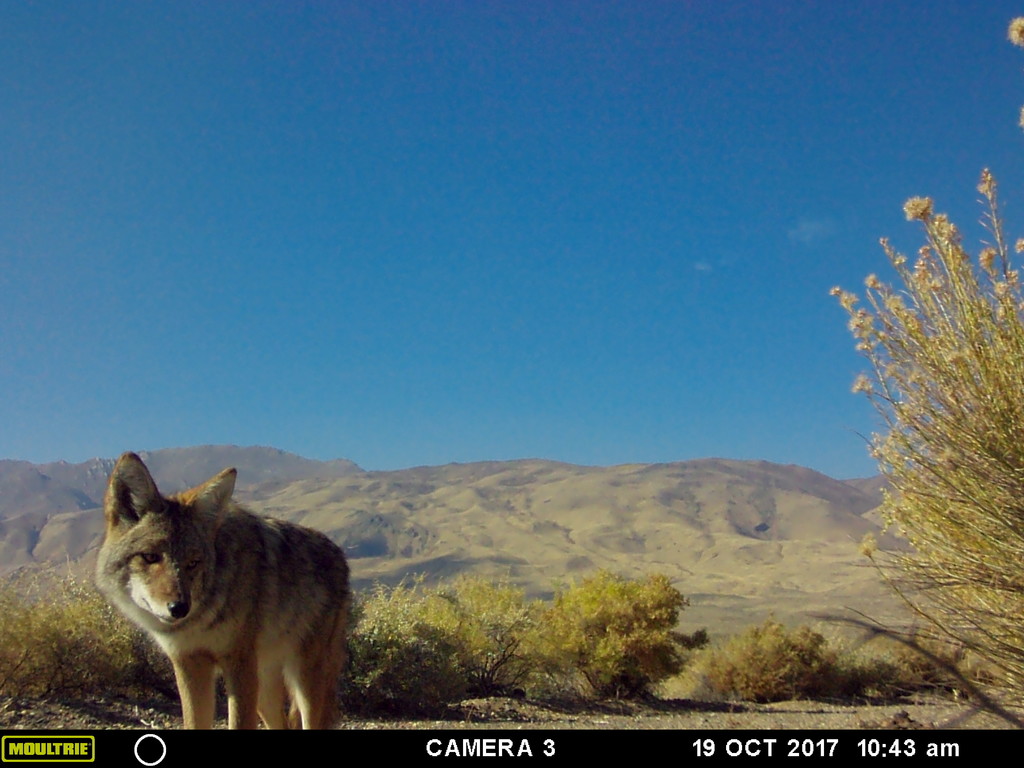
Heading back to what would soon be Burning Man, dust rose behind us in plumes. I looked out the window at the acres between us and “home” at the edge of the property. It reminded me that taking the ethos of Burning Man outside the playa may be possible — and local communities as well as Burning Man may be better for it. In the remote dust-world of Black Rock City, it’s easy to forget our responsibility toward plants and creatures of this world. That’s why symbiosis with the wild will be key for any of the aforementioned initiatives to be attractive to Burners beyond BRC. For instance, a wind farm wouldn’t make sense if it disturbed the native golden eagle population. A hydroelectric plant wouldn’t be consistent with the ideals of Burning Man if building it destroyed the home of indigenous minnows in the local watering holes. While it’s true that conservation efforts are costly, the adjacent space to the property is a national conservation area, lending credence to the idea that Fly Ranch has something worth holding onto — even at a cost.
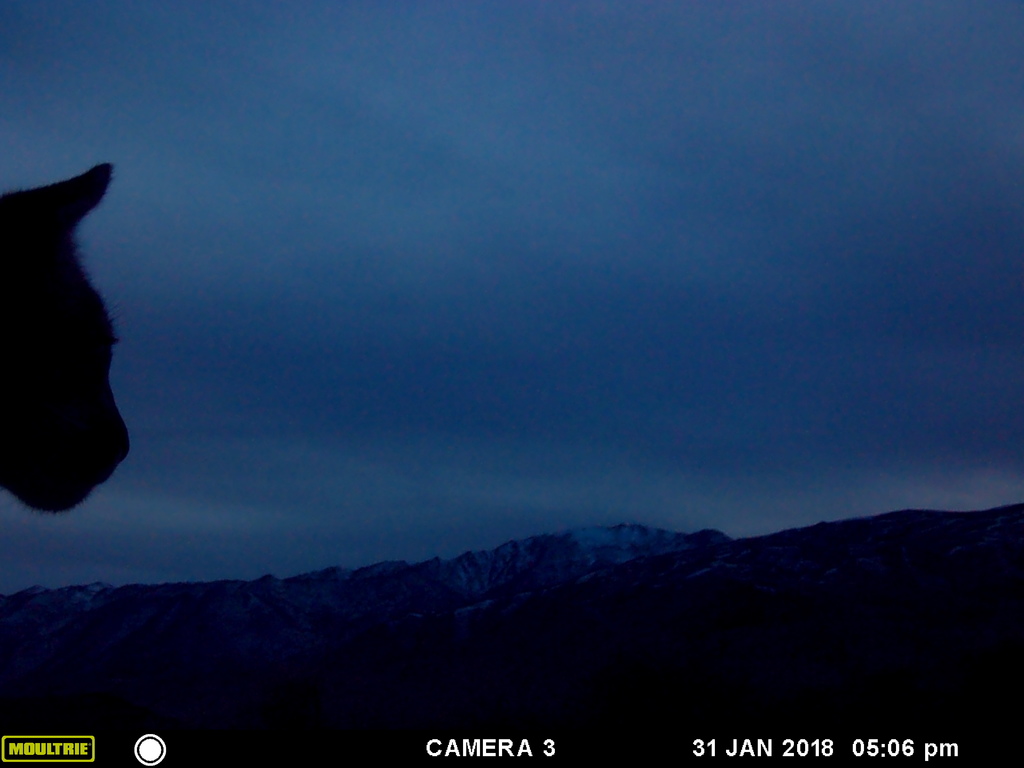
These are just a few of the ideas percolating to the surface. There are other tours and more folks exploring this space with the guidance of Burning Man Project’s Fly Ranch team. You can find info about all of that and contact the team on the Fly Ranch website, and see details about the history of the land, maps describing zoning of the property, and photos of everything found at the site in the all-summer-long super-fine-tooth-combed mega MOOP sweep.
How do you think Burners can best build a future at Fly Ranch? Let us know in the comments below. For more stories from the land, visit the Fly Ranch section of the Burning Man Journal.